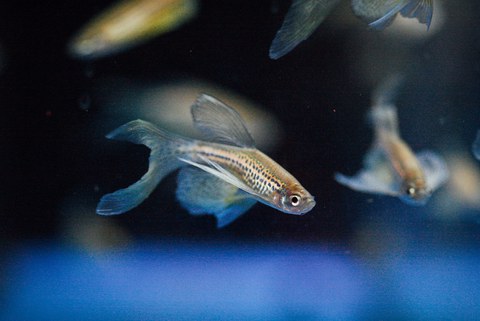Jun 19, 2023
Screening in Zebrafish Identifies a Drug to Potentially Improve Recovery From Spinal Cord Injury
Scientists from the Center for Regenerative Therapies Dresden (CRTD) at TUD Dresden University of Technology, the University of Edinburgh, and the Research Institute of the McGill University Health Centre in Montreal, investigated potential drugs to improve recovery from spinal cord injury. After testing over a thousand molecules, they identified cimetidine, an existing drug, to improve spinal repair in zebrafish and mice. Their work uncovers a promising route to new treatments and highlights the potential of zebrafish to screen for molecules that aid in spinal repair. The work was published in the journal Theranostics.
Sudden impacts to the spinal cord, such as those caused by a car accident, can cause lifelong injuries. The healing of an injury can be prolonged or even prevented by inflammation caused by an overreaction of the body’s immune system. Reducing inflammation with existing anti-inflammatory drugs suppresses the immune response as a whole, inhibiting the immune cells that are beneficial and promote injury repair.
In a new study, scientists from the Center for Regenerative Therapies Dresden (CRTD) at TUD Dresden University of Technology, the University of Edinburgh, and the Research Institute of the McGill University Health Centre tested more than a thousand drugs in zebrafish larvae for their ability to prevent excessive inflammation during an immune response. Through this screening process, the research team identified an existing drug – cimetidine – that improved spinal cord repair in zebrafish.
Scientists discovered that cimetidine works by helping the body to regulate levels of histamine, a chemical released by the immune system that is involved in inflammatory responses. The findings allowed the team to pinpoint a specific signaling pathway that does not block, but moderates, the immune response after spinal injury to support repair. The drug also helped to improve recovery of movement and reduce the extent of spinal cord damage when tested in mice.
By exploring how cimetidine works, the findings shed new light on the biological pathways involved in recovery from spinal cord injury. The team acknowledges that other drugs that work in a similar way could also be tested for their ability to aid recovery from spinal cord injury. However, further studies are needed to investigate their effects in human clinical trials.
The study also highlights the usefulness of zebrafish in the drug discovery process. “The ability to screen a large number of drugs using the zebrafish model has revealed an important target for future research in spinal cord repair. Our findings open the door to potential new treatments that can moderate inflammation and improve recovery from spinal injury,” says Prof. Catherina Becker, an Alexander von Humboldt Professor and research group leader at the CRTD and University of Edinburgh.
This work was funded by a grant from the Neuroscience Collaboration between the University of Edinburgh and McGill University.
Original Publication:
Ana-Maria Oprişoreanu, Fari Ryan, Claire Richmond, Yuliya Dzekhtsiarova, Neil O. Carragher, Thomas Becker, Samuel David, Catherina G. Becker: Drug screening in zebrafish larvae reveals inflammation-related modulators of secondary damage after spinal cord injury in mice. Theranostics (May 2023)
Link: http://www.doi.org/10.7150/thno.81332
Full resolution picture: https://tud.link/6f4m

